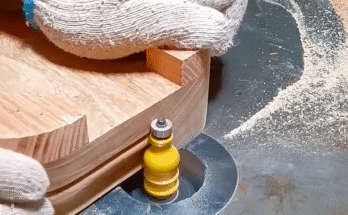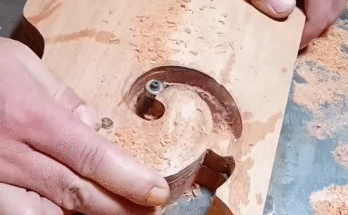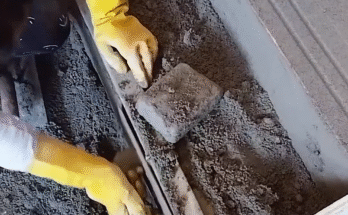Solid rubber tires, also known as cushion tires, are widely used in heavy-duty industrial applications where durability, resistance to puncture, and low maintenance are critical. Unlike pneumatic tires filled with air, solid rubber tires are made entirely of dense rubber compounds. This composition makes them significantly tougher to work with, especially when it comes to cutting or modifying them for disposal, recycling, or customization. Cutting solid rubber tires is a demanding process that requires specialized tools, safety precautions, and a structured approach. This article explores the step-by-step process of cutting solid rubber tires, the challenges involved, and the tools commonly used in the procedure.
Understanding the Composition of Solid Rubber Tires
Before delving into the cutting process, it’s important to understand what makes solid rubber tires so tough. These tires are manufactured using layers of natural and synthetic rubber compounds that are molded under high pressure and heat. They often include a steel or fiber core for added strength and load-bearing capacity. This dense structure makes them resilient in harsh environments but also extremely resistant to standard cutting methods.
Solid tires are commonly found in forklifts, skid-steers, airport equipment, and other industrial machines. Because of their thickness and composition, cutting them requires more effort and precision than typical automotive tires.
Step 1: Assessing the Tire and Planning the Cut
The first step in the process is to assess the tire’s size, thickness, and internal components. Some solid tires include embedded steel bands or fiber reinforcement, which can influence the tools and cutting techniques required. Determine whether the cut is needed for recycling purposes, reshaping, or disposal. The cutting pattern and depth should be planned ahead of time to minimize waste and avoid damage to tools.
Mark the cut lines clearly with chalk or a grease pencil. If the tire has embedded steel or wire mesh, make note of those areas so the blade does not get damaged during the cutting.
Step 2: Gathering Tools and Safety Equipment
Cutting solid rubber tires is labor-intensive and potentially hazardous, so having the right tools and protective gear is essential. Common tools and equipment include:
- Heavy-duty angle grinder or reciprocating saw (Sawzall) with a carbide or diamond blade
- Industrial band saw (for workshop environments)
- Hydraulic shears or tire cutting machines (for high-volume work)
- Cut-resistant gloves
- Safety goggles or face shield
- Hearing protection
- Protective clothing and steel-toe boots
Lubricants such as soapy water or industrial-grade cutting oil can also be useful in reducing friction and preventing overheating of the blades.
Step 3: Securing the Tire
Before cutting begins, the tire must be securely clamped or braced to prevent movement. An unstable tire poses a serious risk to the operator. In a workshop setting, a vise or custom jig may be used to hold the tire in place. For larger tires, a heavy-duty workbench with clamps or even a floor-mounted restraint system may be necessary.
Once secured, ensure the tire is elevated enough so that the blade doesn’t hit the surface underneath. This prevents damage to both the cutting surface and the tool.
Step 4: Making the Initial Cut
Start the cutting process slowly and steadily. If using a reciprocating saw or angle grinder, guide the blade along the marked lines without forcing it. Let the tool do the work. Applying too much pressure can cause the blade to overheat or bind in the rubber.
It’s not uncommon to make multiple passes over the same cut to gradually work through the layers. If embedded steel is encountered, switching to a metal-cutting blade or using bolt cutters might be necessary.
Take frequent breaks to inspect the blade, cool the tool if it’s overheating, and reapply lubricant if needed. The rubber’s resistance increases with temperature, so maintaining a manageable work pace helps efficiency.
Step 5: Cutting Through Steel Inserts (If Applicable)
Some solid rubber tires include internal steel reinforcements, which must be addressed carefully. If these are detected:
- Switch to a metal-rated cutting blade on your saw
- Use an angle grinder to cut through exposed steel bands
- Employ bolt cutters for steel wires if accessible
- Hydraulic shears may also be used for cutting through thicker metal inserts
These components can dull blades quickly, so it’s wise to have spares on hand. Never use worn-out blades—they’re more prone to slipping and can cause accidents.
Step 6: Finishing the Cut and Cleanup
Once the tire is fully cut, inspect the pieces to ensure clean edges and proper separation. Remove any frayed rubber or sharp wire ends using a utility knife or file.
The cut rubber can then be processed for recycling, disposal, or reuse. In some cases, the rubber pieces are further shredded or ground down for use in playground surfaces, rubber mats, or as fuel in industrial applications.
Clean your tools, dispose of any scrap properly, and store any reusable sections safely.
Challenges in Cutting Solid Rubber Tires
The most significant challenge is the physical density of the rubber. It’s elastic, heat-resistant, and often reinforced—all qualities that make it perfect for industrial use, but difficult to cut.
Other common difficulties include:
- Overheating tools due to friction
- Blade wear and breakage
- Flying rubber particles or dust
- Difficulty in clamping oddly shaped tires
For these reasons, many organizations opt to send solid tires to specialized facilities that have dedicated machinery for tire processing.
Conclusion
Cutting solid rubber tires is not a task for the unprepared. It requires patience, strength, and proper equipment. Whether for repurposing, recycling, or disposal, the key to success lies in understanding the tire’s construction, using the right tools, and following a safe and methodical approach. As sustainability and material reuse continue to gain importance, the ability to effectively and safely cut solid rubber tires becomes increasingly valuable in both industrial and environmental contexts.


